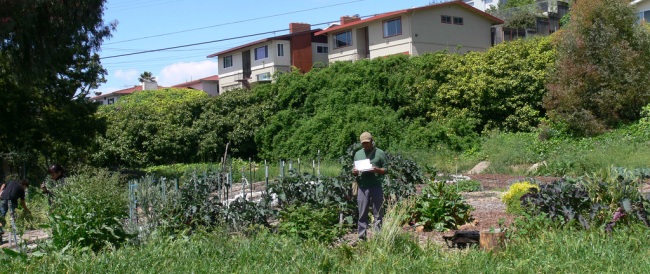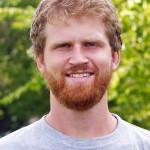
Humans are inextricably connected to the earth. We inhabit, breathe, drink, and eat this strange blue globe that is our only home. The oldest religious traditions recognized this scientific claim by weaving stories, almost myths-as-memory, which describe humans as creatures crafted from the dirt: adam and adama, human and humus, culture and cultivate. Indeed, the plurality of human cultures grows from natural biodiversity. And we are social animals, dependent for better and worse on lives beyond ourselves. Restorative justice agrees by stating that society is interconnected, which reframes crime as the cause and effect of damaged relationships and disconnection from a sense of belonging. If this is true, then the proper response to crime, to the violation of people and interpersonal relationships, is the obligation to make things as right as possible, which includes the rehabilitation of the offender.
But rehabilitation to what? If crime is personal and societal, which are interconnected, then simply rehabilitating offenders to this broken locus, especially after the alienating and shaming force of prison, can perpetuate the cycle of violence, evident in recidivism and incarceration rates. The legal system also alienates victims by emphasizing crime as an offense to the state. If restorative justice is right, then situating crime in the nexus of social relatedness demands the restoration of society itself, which should include the realization that we are also embedded in nonhuman life.
This realization is necessary for right relationships and healthy culture. And so is the need for belonging and for participation in meaningful and imaginative work. By work I do not mean any grueling task done in exchange for payment which distracts us from more productive pursuits. I mean work, at least good work, as the union of the body and mind in creative and responsible engagement with the world. I am therefore arguing for the union of unalienated work, nature, community, healing, and place. This union could inform preventative and responsive approaches of restorative justice and trauma healing. Permaculture can help provide the radical praxis necessary to embody this union. Rooted in ecological science, systems theory, and native cultures of place, permaculture stems from three interrelated ethical maxims: “Care for the earth (husband soil, forests, and water)”; “Care for people (look after self, kin, and community)”; and “Fair share (set limits to consumption and reproduction, and redistribute surplus).” Furthermore, the word permaculture means permanent and sustainable agriculture and culture through reconstituted communities that imitate the structures and functions of local ecosystems that exhibit resilience, stability, and longevity.
In a way, permaculture incarnates an alternative society envisioned by restorative justice. Meaningful work and craft cannot be undervalued, and neither can communal belonging. The nature and practice of community is vital to the vision presented here. The term “community” has been stretched like a balloon in contemporary parlance, evidenced in expansive expressions such as the “academic community,” the “online community,” the “international community,” etc. Such combinations might recognize our interconnectedness, but they also dilute, or delude, “community” of any bioregional emphasis, local mutuality, and ultimately interdependence. Without such understandings, restorative justice subsidizes the status quo arrangement between atomistic individuals and the nation-state.
Activist, writer, and farmer Wendell Berry writes that “[b]y community, I mean the commonwealth and common interests, commonly understood, of people living together in a place and wishing to continue to do so. To put it another way, community is a locally understood interdependence of local people, local culture, local economy, and local nature” (1993, p. 119). Berry narrows prevalent definitions by repeating the word local, claiming that community must be rooted, and expands it by introducing nature, recognizing that community is not restricted to human structures but incorporates the nonhuman as well. In fact, Berry claims that in speaking of a healthy community we must speak of more than humans, because community is like an ecosystem: the neighborhood of humans and “its soil, its water, its air, and all the families and tribes of the nonhuman creatures that belong to it . . . All neighbors are included” (ibid, pp. 14, 15). Where I live, who I live there with, and how I live define my relationship to the world. We won’t save places we don’t love, and we can’t love places we don’t know, and we can’t know places with which we aren’t intimately familiar.
Lorraine Stuzman Amstutz laments that a critical issue in RJ approaches such as Victim Offender Conferencing are their individualistic nature (Stuzman Amstutz, 2008, p. 80) even though community is central. This is understandable, because VOC is usually seen as a curative rather than a preventative. Perhaps permaculture can help erode the dichotomy between preventing and healing by giving the communal aspect of restorative justice some livability. The name Victim Offender Conferencing almost begs for this to occur: in Latin, to confer simply means “to bring together.” An integrative vision weaving together nature, community, healing, and work is worthy of a restorative name.
References:
- Berry, Wendell. Sex, Economy, Freedom & Community: Eight Essays. New York: Pantheon Books, 1993.
- Stutzman Amstutz, Lorraine. The Little Book of Victim Offender Conferencing: Bringing Victims and Offenders Together in Dialogue. Intercourse, PA: Good Books, 2008.

[Jonathan McRay is a first-year MA student at the Center for Justice and Peacebuilding. Before coming to CJP, Jonathan worked in Palestine as a journalist and nonviolent activist and is the author of You Have Heard It Said: Events of Reconciliation. Additionally, he worked with a resource center and community farm in Mozambique and obtained a permaculture design certificate through the Permaculture Project.]
